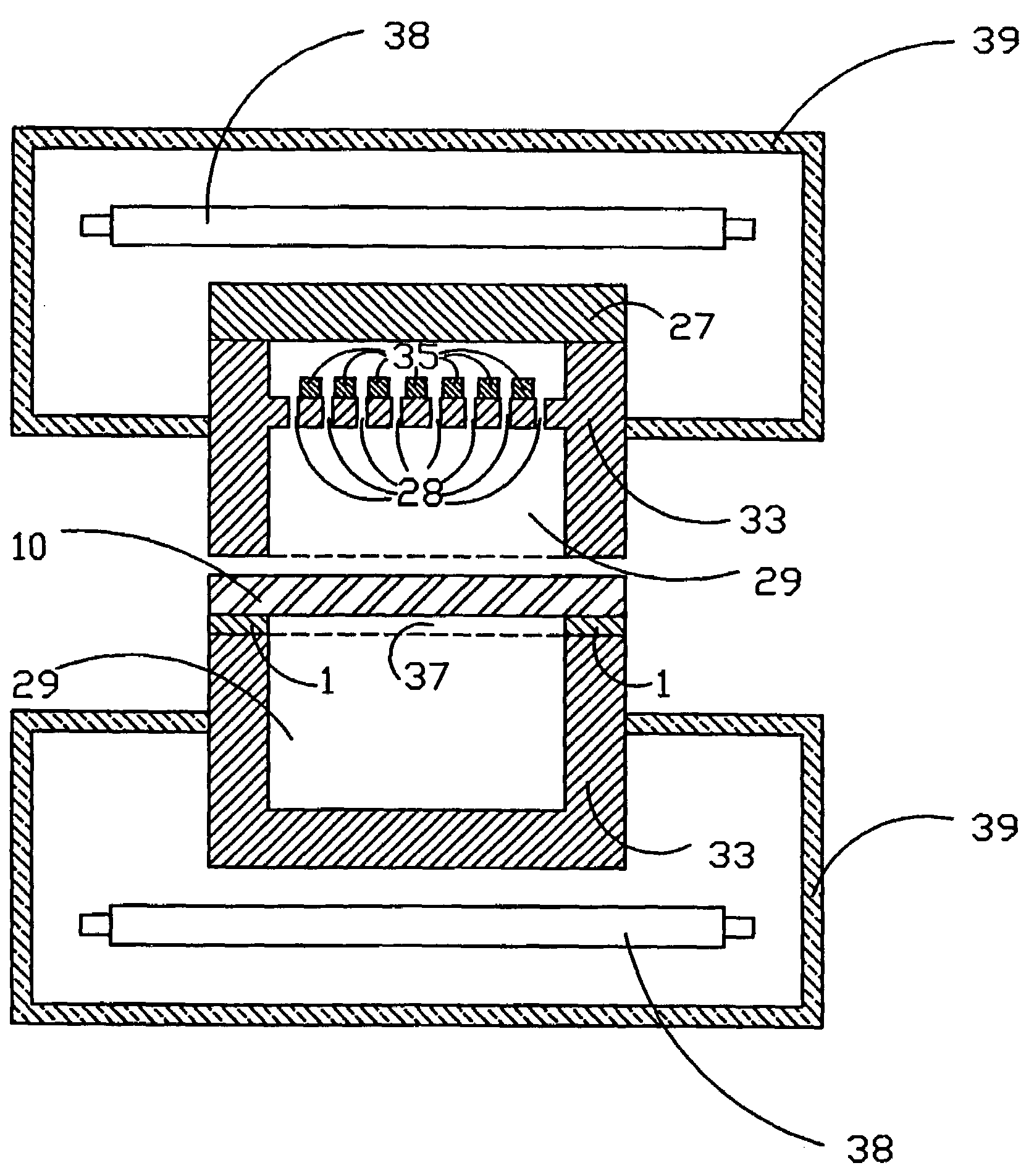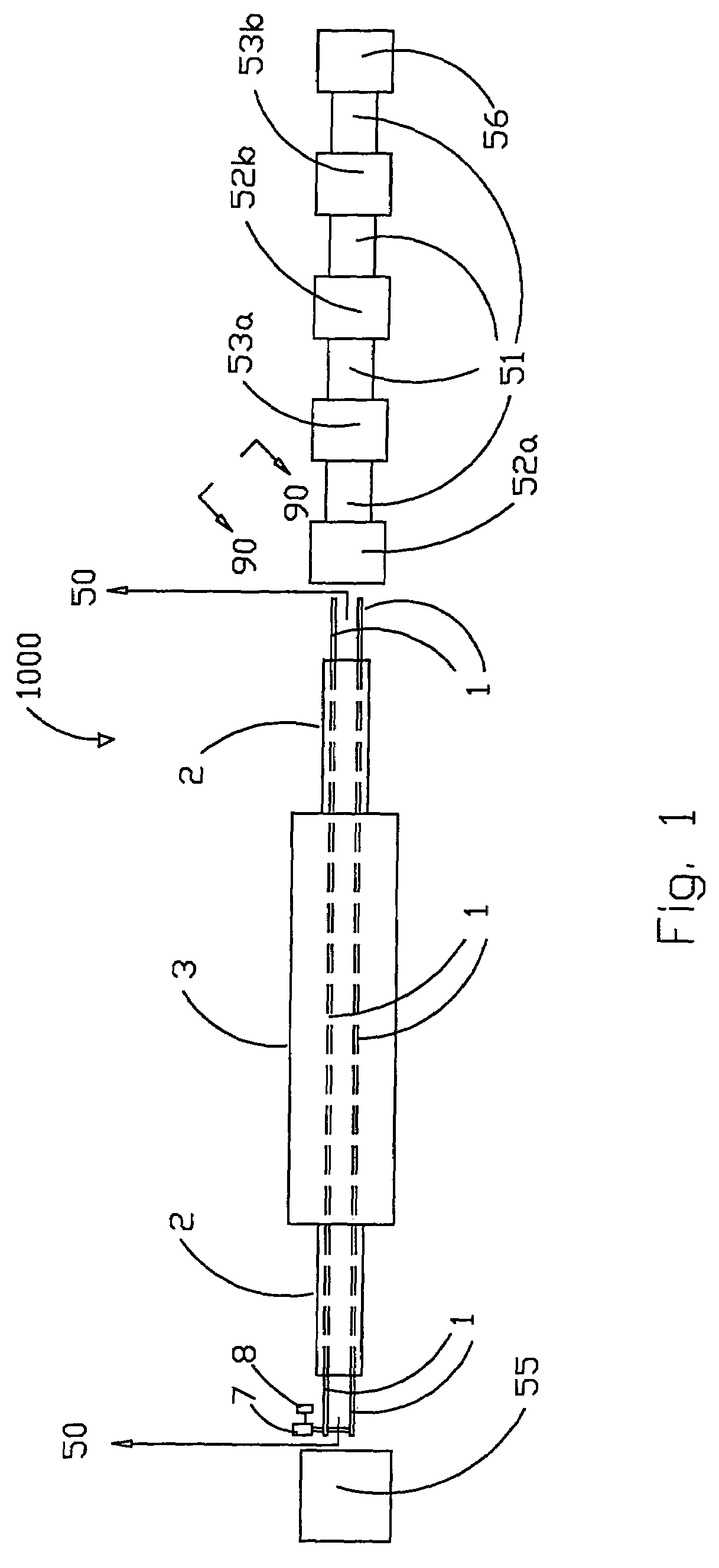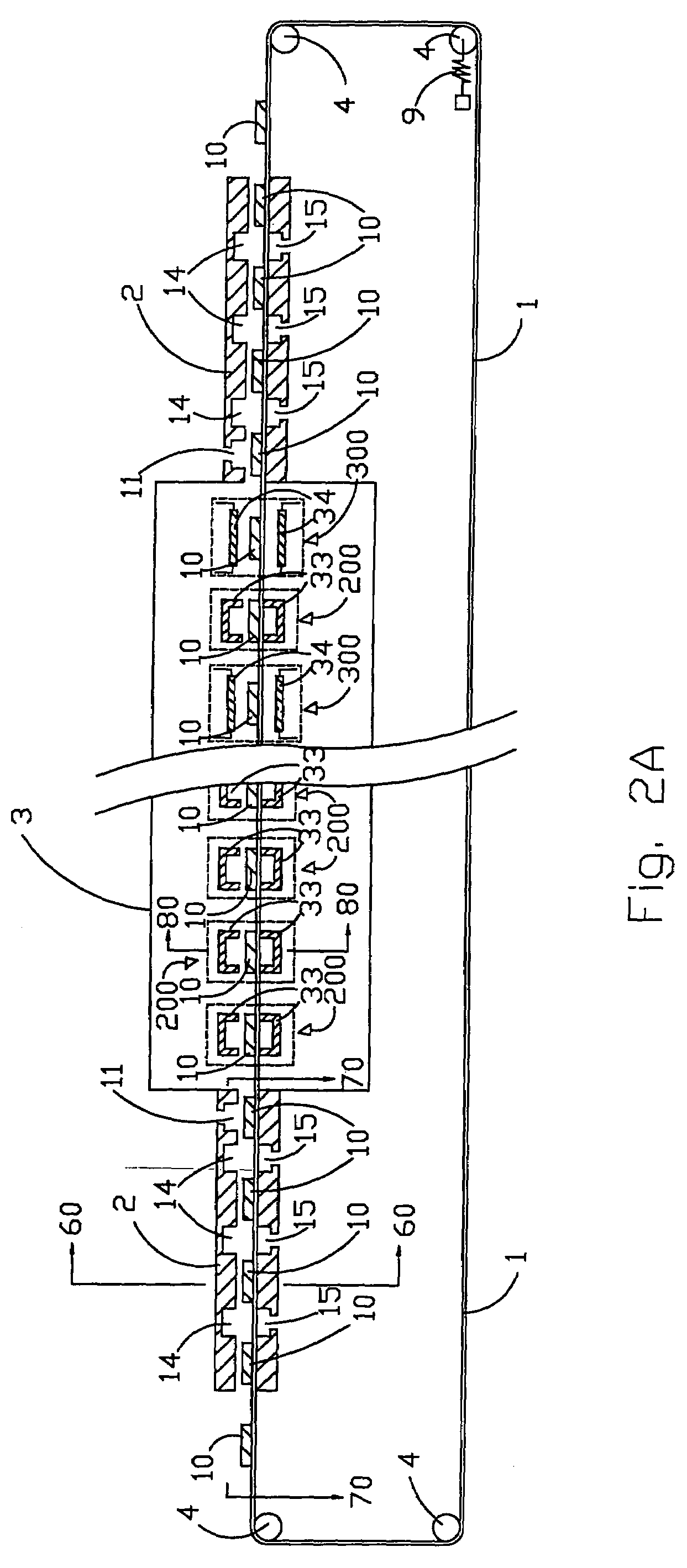Apparatus and processes for the mass production of photovoltaic modules
a photovoltaic module and photovoltaic technology, applied in the direction of crystal growth process, polycrystalline material growth, chemically reactive gas, etc., can solve the problem of low throughput, low throughput, and the quantity of material which can be lawfully released into the environment or into the occupational setting, and achieve low resistance ohmic contact, high throughput rate, and stable over time
- Summary
- Abstract
- Description
- Claims
- Application Information
AI Technical Summary
Benefits of technology
Problems solved by technology
Method used
Image
Examples
Embodiment Construction
[0042]Referring now to FIG. 1, there is shown an overview of the preferred embodiment of an apparatus 1000 for producing photovoltaic modules in accordance with the present invention. A substrate cleaning station 55 cleans the commercially available substrates that typically comprise low cost soda lime glass coated with transparent conducting oxide (TCO). After cleaning, a pair of metal strip belts 1 transport the substrates through the next portion of the apparatus 1000. The belts may be moved bidirectionally by means of a known stepper motor 7. Precise indexing of the position of the pair of belts 1 is accomplished by the use of a commercially available stepper motor controller 8. The pair of metal strip belts 1 pass through a pair of openings 2 and a vacuum chamber 3. A plurality of process stations for the processing of the critical semiconductor layers are contained within the vacuum chamber 3, and are described in detail below. Another series of process stations are linked by ...
PUM
| Property | Measurement | Unit |
|---|---|---|
| operating pressure | aaaaa | aaaaa |
| length | aaaaa | aaaaa |
| distance | aaaaa | aaaaa |
Abstract
Description
Claims
Application Information
 Login to View More
Login to View More - R&D
- Intellectual Property
- Life Sciences
- Materials
- Tech Scout
- Unparalleled Data Quality
- Higher Quality Content
- 60% Fewer Hallucinations
Browse by: Latest US Patents, China's latest patents, Technical Efficacy Thesaurus, Application Domain, Technology Topic, Popular Technical Reports.
© 2025 PatSnap. All rights reserved.Legal|Privacy policy|Modern Slavery Act Transparency Statement|Sitemap|About US| Contact US: help@patsnap.com



